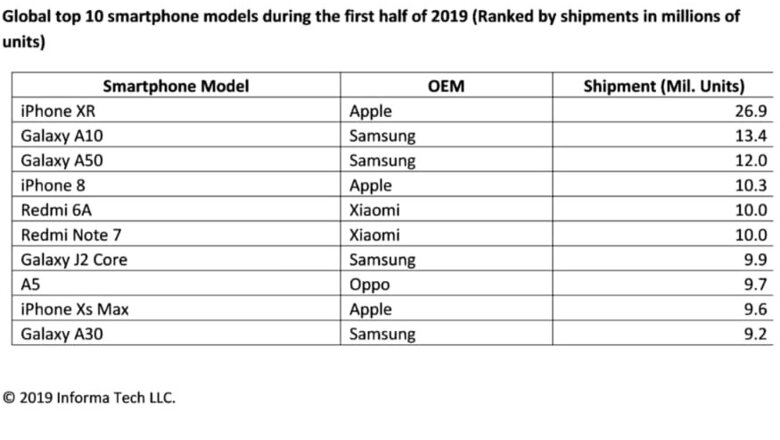
views
Nobody is buying the Apple iPhones, is it? You are saying that because you heard everyone else around you saying it? Well, keeping aside all the perceptions and the rhetoric which are generally not based on facts, the data speaks for itself. When research firm IHS Markit listed out the top selling smartphones globally for the first half of the year 2019, guess which phone led the way? In the way Lewis Hamilton is well and truly in the lead of the Formula 1 2019 drivers’ world championship, the Apple iPhone XR was well and truly the best-selling smartphone around the world. And by a huge margin. These numbers come just ahead of the Apple Special Event on September 10, where we will see the new Apple iPhone line-up. This means there surely is appetite for buying $749 phones. And there is a completely new script being written here.
Let us look at the data for a moment. As many as 26.9 million iPhone XR units were sold. Yes, the same iPhone XR which many complained was not exactly affordable. The laundry list of complains included that the iPhone XR was too expensive, was heavy to hold, had just an LCD display and had a single camera. All issues that were argued about endlessly on Twitter and the real world by many, and prophesized the end of the iPhone XR’s journey, even before it began. Yet, 26.9 million more people around the world disagreed, in just the first half of this year. The second best-selling phone? The Samsung Galaxy A10 which clocked 13.4 million units followed by the Samsung Galaxy A50 at 12 million units. Even the iPhone 8 (released in 2017) sold 10.3 million units, which is more than Xiaomi’s Redmi 6A and Redmi Note 7, both of which clocked 10 million units. Even the iPhone XS Max sold 9.6 million units and got into the top 10—apparently, this was a phone that costs more than Rs 1 lakh, and that was supposed to be some sort of a crime. So, when Tim Cook goes on stage on September 10 and says the iPhone XR and indeed the iPhone XS line-up has been a resounding success, it is a statement that gets its foundations from these figures. Quarter after quarter.
And that neatly leads us to this year’s iPhones. Nothing is confirmed till Apple officially announces the new iPhone line-up, but it is generally expected that the iPhone 11 will succeed the iPhone XR, the iPhone 11 Pro will succeed the iPhone XS and the iPhone 11 Pro Max will succeed the iPhone XS Max. Do we expect the iPhone 11 to open the sales at the same $749 price tag as the iPhone XR last year? The one thing to ponder on is that at this time last year, currencies were a tad more volatile than they are now. Particularly the Indian Rupee. That improvement could allow Apple to go a tad lower with the entry pricing of this year’s iPhones. But then there are the new tariffs for imports from China, which will in a way impact the pricing of the iPhones in the US—Apple will have to factor in a margin for that. That puts Apple in a potential predicament, because it really wouldn’t want a situation where iPhones in other markets sell for a significantly lower price than in its home market, the US. That said, there is that threat of a global recession which could limit the spending power of potential consumers with everyone looking to hold on to the money they have, which means making a deal too enticing for them to miss, has to be the aim.
All said and done, there is a significant appetite for the current iPhone line-up, as well as the upcoming iPhones. The lower the price, the better, for sure. But that clearly isn’t stopping those who really want an iPhone.




















Comments
0 comment